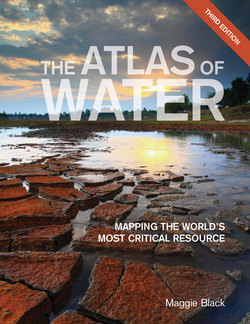Читать книгу The Atlas of Water - Maggie Black - Страница 23
На сайте Литреса книга снята с продажи.
ОглавлениеRising Demand
More than 4,000 cubic kilometres of fresh water are withdrawn every year – equivalent to roughly 1,700 litres per person per day. Although this is more than anyone needs for personal use, even to fill their swimming pool and sprinkle their garden round the clock, a large amount of water is consumed indirectly, embedded in food and industrial products. Meat-rich diets and other attributes of a high-consumption lifestyle, such as the acquisition of cars, television sets, and goods whose manufacturing processes require water, absorb ever larger quantities. Thus, the rapid rise in demand, experienced across all categories of water use (agricultural, industrial, and domestic/municipal), is a reflection not just of an increasing global population but of changing lifestyles. Domestic use – for drinking, bathing, cleaning, – is modest compared to demand for agriculture and industry. But industrial water use, including that for hydropower, reflects people’s demand for embedded water in the form of high-class products and high-end lifestyles. Those people still living in semi-subsistence economies make the lowest demands, often using fewer than 25 litres per person per day for all purposes. Water for agriculture is by far the largest extractive category. This reflects lower demand for industrialized lifestyle items in less developed and more agrarian regions; and the dependence, in low rainfall and monsoon areas, on seasonal storage and irrigation from rivers, reservoirs and aquifers. Increasing demand for food and growing demand for energy continue to inspire heavy investment in large-scale water infrastructure, despite the costly ecological damage and human displacement entailed. Water withdrawals for irrigation are expected to increase by 5 per cent by 2050. This may sound modest, but will mainly occur in regions already suffering from water scarcity.
WORLD WATER USE
Q 3 Water Shortage
26
